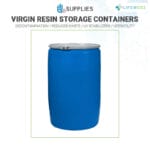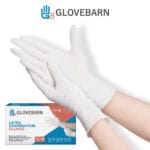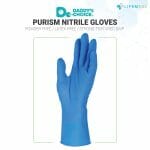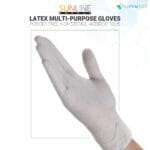What are Disposable Coveralls?
Disposable coveralls are single-use protective garments designed to provide full-body protection against hazardous substances, including chemicals, biological contaminants, dust, and other harmful particles. These coveralls are commonly used in various industries, including healthcare, manufacturing, construction, and chemical processing, to protect workers from exposure to hazardous materials. Made from lightweight, breathable materials such as polypropylene or polyethylene, disposable coveralls offer comfort and flexibility while ensuring a protective barrier against contaminants. They are designed to be discarded after use, ensuring hygiene and minimizing the risk of cross-contamination.
Why are Disposable Coveralls Important?
Disposable coveralls are crucial in environments where workers are exposed to harmful substances that could pose a threat to their health and safety. In healthcare settings, for example, they provide an essential barrier against infectious agents, helping prevent the spread of diseases and protecting healthcare workers from exposure to bloodborne pathogens or other biological hazards. Similarly, in industrial settings, disposable coveralls protect workers from harmful chemicals, dust, and debris, ensuring that contaminants do not come into contact with the skin or clothing.
Because these coveralls are intended for single-use, they also minimize the risk of cross-contamination. Once they have been exposed to hazardous substances, they are discarded, ensuring that any potential contaminants are safely contained and disposed of. This is especially important in environments where maintaining sterility and hygiene is critical, such as laboratories or cleanrooms.
Key Features of Disposable Coveralls
- Full-Body Protection: Disposable coveralls provide coverage from head to ankle, protecting against splashes, particulates, and harmful contaminants.
- Lightweight and Breathable: Designed for comfort, these coveralls are made from breathable materials that prevent overheating, allowing workers to wear them for extended periods.
- Elastic Cuffs and Hoods: Many disposable coveralls include elastic cuffs, hoods, and ankle closures to ensure a snug fit, further reducing the risk of exposure.
- Single-Use Design: After exposure to hazardous materials, these coveralls are discarded, reducing the risk of contamination and ensuring hygiene.
Applications of Disposable Coveralls in the PPE Industry
Disposable coveralls are widely used in industries where worker safety and contamination control are critical. In healthcare, they are worn by doctors, nurses, and other medical personnel when treating infectious patients or handling hazardous materials. In construction, disposable coveralls protect workers from dust, asbestos, and other potentially harmful particles encountered during demolition or renovation tasks.
In chemical processing plants and laboratories, these garments safeguard workers from chemical splashes, spills, and harmful vapors. They are also used in cleanrooms to maintain sterility by preventing the introduction of contaminants from outside the controlled environment.
Conclusion
Disposable coveralls are an essential component of personal protective equipment (PPE) in industries where protection from hazardous substances is vital. By providing full-body coverage and preventing cross-contamination, they ensure worker safety and hygiene. Their lightweight, breathable design makes them comfortable for long-term use, while their single-use nature ensures a sterile and safe working environment in healthcare, industrial, and laboratory settings.
« Back to Glossary Index
















